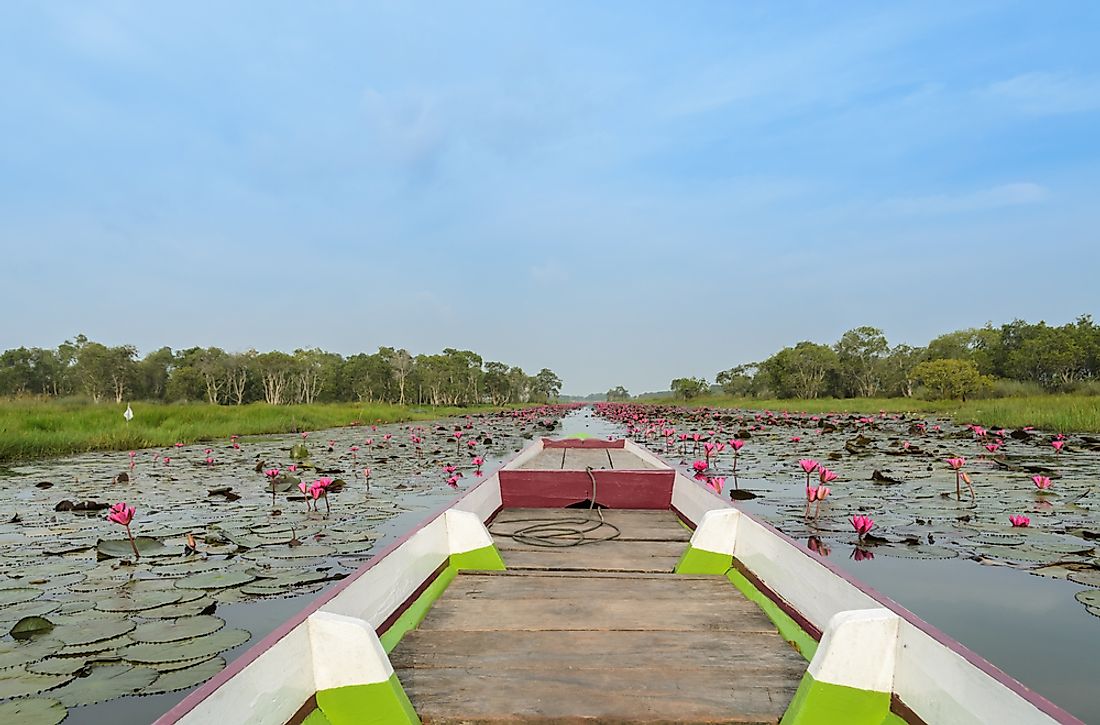What is a Ramsar Wetland?

What Is A Ramsar Wetland?
A Ramsar wetland is a wetland placed under protection due to its international and ecological significance. The policies governing the protection of the wetlands were discussed during the Ramsar Convention held on February 2, 1971 in Iran under the auspices of UNESCO. The definition of a wetland under Ramsar is an area with marsh or water, whether artificial or naturally occurring, where the water is either flowing or stagnant, either salty or fresh and can also include marine areas where the depth of water during low tide reaches a minimum of six meters. The wetlands include surrounding areas of the shores, riverbanks, and entire watercourses. The classifications of wetlands fall into three main classes, which include marine wetlands, artificial wetlands, and inland wetlands. These groups can be classified further according to the type of water such as the fresh, alkaline, saline, and brackish water.
What Is the Ramsar Convention?
The Ramsar Convention is an international agreement for the protection and conservation of wetlands. The convention was held on February 2nd, 1971 in the Iranian city of Ramsar from which the Convention gets its name. The convention had 169 countries with 7 of them ratifying the policies discussed. The Ramsar Convention was created after the involved parties came to the realization that the significance of many wetlands around the globe were under serious threat of either pollution or disappearance. The contracting parties meet after every three years to discuss ways of implementing their objectives, and the meeting is known as the Conference of Contracting Parties. The most recent meeting was held in 2015 in the city of Punta del Este, Uruguay. The Conference of Contracting Parties also has several international partners who assist in the implementation of the Convention’s goals including, The BirdLife International, The International Water Management Institute, The International Union for the Conservation of Nature, the WWF, and the Wetlands International.
What Is The Ramsar List?
All Ramsar sites are recorded on the List of Ramsar wetlands of international importance and Wetlands International, which is a non-profit organization, provides access to the Ramsar database through the Ramsar Sites Information Service. The Ramsar convention defines the list of wetlands of international importance as areas that has been set aside for conservation, sustainable use of wetlands because of their fundamental ecological functions, and because of their economic, scientific, cultural and recreational value. The Ramsar convention also ascertains that wetlands should be selected for the list due to their international significance regarding botany, limnology, hydrology, ecology, or zoology,
What Is The Criteria for Selecting Wetland Sites?
The Convention considers several factors it has established to determine if a wetland qualifies as a Ramsar Wetland. The first of the criteria is that the wetland has to be unique or rare. The other consideration is that the wetlands has to be a habitat for endangered wildlife or should support biodiversity crucial to the ecosystem of the surrounding area. Another consideration is that the wetland supports needs to support a minimum of 20,000 individuals of water birds. A wetland supporting a minimum of 1% of the total number of a particular species can also be classified as a Ramsar Wetland. A wetland crucial for the spawning a particular species of fish can also be deemed as a Ramsar Wetland.
The Ramsar Sites Of The World
By 2016 there are 2,231 wetlands all over the world listed as Ramsar Sites with the United Kingdom having 170 sites. These sites are protecting 2134,936,005 hectares and 169 national governments participating. The Tumba-Ngiri Maindombe in the Democratic Republic of Congo is the largest wetland under the Ramsar List with an area covering 25,365 square miles.











